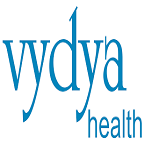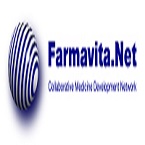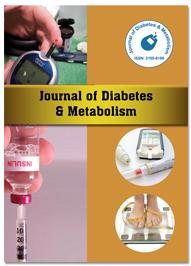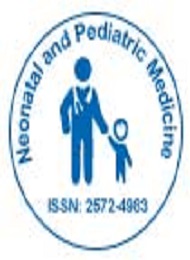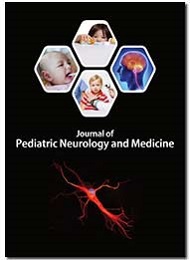
It is our great pleasure to invite all of you to the “32nd International Conference on Pediatrics, Neonatology and Pediatric Nursing” March 06-07, 2023, Berlin, Germany. The conference will analyse the recent developments and new initiatives that can be enforced to the research and advancements in the prospects of Pediatrics, Neonatology and Pediatric Nursing.
32nd International Conference on Pediatrics, Neonatology and Pediatric Nursing

Theme: Introduction to maternity and pediatric nursing {CME-CPD Accreditations Available}
Renowned Speakers
PEDIATRIC CONGRESS 2023
The conference will examine current trends and fresh ideas that can be implemented to the study of and advancements in paediatric infectious disease and therapy. Pediatrics is a fast expanding profession that is having a significant impact on medical research and medical sciences. The fact that it has achieved significant progress throughout time and is still influencing numerous industries can be used to determine its value and significance.
Why to attend?
After participating in this Webinar, attendees should be able to discuss emerging problems in Pediatrics, Debate and apply recent research discoveries related to Pediatrics and Reflect on the place of critical distance in Pediatrics.
Salient Features
- Meet University People and corporate visionaries to get inspired
- Expand your knowledge to get explanations for problems
- Knowledge, Bench-marking and Make contacts offered at one place
- Form connections and for global networking
- Highly planned and organized scientific programs
- Meet with new merchants and trader
Targeted audience:
- · Pediatric Researchers
- · Pediatricians
- · Neonatologists
- · Pediatric surgeons
- · Pediatric Nurse practitioners
- · Pediatric Nurses
- · Pediatric Associations and Societies
- · Pediatric Faculty
- · Nutrition Specialists
- · Student
- · Entrepreneurs
- · Child psychologists
Track 1: Diabetes and its Causes on Human Health
Related Societies USA: American Academy of Pediatrics, American Pediatric Society/Society for Pediatric Research, Pediatric Endocrine Society, Academic Pediatric Association, Diabetes mellitus
Related Societies Asia Pacific: Asia Pacific Pediatric Association, Asia Pacific Pediatric Orthopedic Society, Asian Society for Pediatric Research, Asian Society for Pediatric Infectious Diseases, Diabetes mellitus
Related Societies Europe: European Pediatric Association, European Academy of Pediatrics, European Society for Pediatric Research, European Society of Pediatric Intensive Care, Diabetes mellitus
Track 2: Diabetes in Children
Type 1 diabetes in children is a condition in which your child's body no longer produces an important hormone (insulin). Your child needs insulin to survive, so the missing insulin needs to be replaced with injections or with an insulin pump. Type 1 diabetes in children used to be known as juvenile diabetes or insulin-dependent diabetes. The diagnosis of type 1 diabetes in children can be overwhelming, especially in the beginning. Suddenly you and your child — depending on your child's age — must learn how to give injections, count carbohydrates and monitor blood sugar. There's no cure for type 1 diabetes in children, but it can be managed. Advances in blood sugar monitoring and insulin delivery have improved blood sugar management and quality of life for children with type 1 diabetes.
Related Societies Asia Pacific: Asia Pacific Pediatric Association, Asia Pacific Pediatric Orthopedic Society, Asian Society for Pediatric Research, Asian Society for Pediatric Infectious Diseases
Related Societies Europe: European Pediatric Association, European Academy of Pediatrics, European Society for Pediatric Research, European Society of Pediatric Intensive Care
Track 3: Neonatology
Newborn infants, more precisely those that are under four weeks old, are referred to as neonates. This is a highly vital stage in a baby's development because it's when things like eating routines are formed, when parent-child bonding starts, and most significantly, when the infant is most vulnerable to infections that could go serious. Congenital flaws or birth abnormalities are also noted at this stage.
As a neonate, the infant is going through a lot of changes as it learns to adapt to life outside of the womb. Its physiological systems, like the immune system and lungs, are still developing and require more protection from potential infection sources.
Related Societies USA: American Academy of Pediatrics, American Pediatric Society/Society for Pediatric Research, Pediatric Endocrine Society, Academic Pediatric Association
Related Societies Asia Pacific: Asia Pacific Pediatric Association, Asia Pacific Pediatric Orthopedic Society, Asian Society for Pediatric Research, Asian Society for Pediatric Infectious Diseases
Related Societies Europe: European Pediatric Association, European Academy of Pediatrics, European Society for Pediatric Research, European Society of Pediatric Intensive Care
Track 4: Breast feeding
The preferred form of sustenance is breast milk. The American Academy of Pediatrics (AAP) advises introducing appropriate solid food between the ages of 6 months and 1 year after a minimum of 6 months of exclusive breastfeeding. After a year, breastfeeding can continue for as long as the mother and baby want it to, but it should only be used as a supplement to a balanced diet that includes solid meals and fluids. Practitioners should start conversations about breastfeeding before conception, outlining the several benefits: Benefits for the child's diet and brain development as well as defence against infection, allergies, obesity, Crohn's disease, and diabetes. Reduced fertility during lactation; quicker recovery to prepartum health (e.g., weight loss); and protection from osteoporosis, obesity, ovarian cancer, and premenopausal breast cancer for the mother
Related Societies USA: American Academy of Pediatrics, American Pediatric Society/Society for Pediatric Research, Pediatric Endocrine Society, Academic Pediatric Association
Related Societies Asia Pacific: Asia Pacific Pediatric Association, Asia Pacific Pediatric Orthopedic Society, Asian Society for Pediatric Research, Asian Society for Pediatric Infectious Diseases
Related Societies Europe: European Pediatric Association, European Academy of Pediatrics, European Society for Pediatric Research, European Society of Pediatric Intensive Care
Track 5: Pediatric Cardiology
The evaluation, diagnosis, and treatment of congenital and acquired cardiovascular issues in foetuses, infants, children, adolescents, and young adults are the focus of the medical speciality known as paediatric cardiology.
Some children were born with structural cardiovascular differences. Some people may experience issues with the electrical system that regulates their heartbeat. Pediatric cardiologists have received specialised training to identify and treat each of these issues.
Related Societies USA: American Academy of Pediatrics, American Pediatric Society/Society for Pediatric Research, Pediatric Endocrine Society, Academic Pediatric Association
Related Societies Asia Pacific: Asia Pacific Pediatric Association, Asia Pacific Pediatric Orthopedic Society, Asian Society for Pediatric Research, Asian Society for Pediatric Infectious Diseases
Related Societies Europe: European Pediatric Association, European Academy of Pediatrics, European Society for Pediatric Research, European Society of Pediatric Intensive Care
Track 6: Pediatric Dentistry
The area of dentistry that deals with children from infancy through puberty is known as paediatric dentistry.
Among some of the duties of a paediatric dentist are:
- Identifying and treating oral diseases (preventive and restorative)
- X-ray and other diagnostic test interpretation
- Create treatment strategies to improve the dental health of paediatric patients, both those who are healthy and those who require particular medical attention.
- Observe the expansion and development of each tooth and jaw.
Related Societies USA: American Academy of Pediatrics, American Pediatric Society/Society for Pediatric Research, Pediatric Endocrine Society, Academic Pediatric Association
Related Societies Asia Pacific: Asia Pacific Pediatric Association, Asia Pacific Pediatric Orthopedic Society, Asian Society for Pediatric Research, Asian Society for Pediatric Infectious Diseases
Related Societies Europe: European Pediatric Association, European Academy of Pediatrics, European Society for Pediatric Research, European Society of Pediatric Intensive Care
Track 7: Pediatric Dermatology
Doctors that specialise in treating children's skin, hair, and nails are known as paediatric dermatologists. From infants to teenagers, they care for kids of all ages. From acne to skin cancer, they are able to identify and treat a wide range of illnesses.
Pediatric dermatologists are employed by hospitals or clinics. Children who have problems with their skin, hair, or nails are diagnosed and treated. Such actions include:
Treat skin diseases include vitiligo (loss of skin pigment), dermatitis, eczema, psoriasis, allergic responses, and others.
- Get rid of any skin growths like moles, cysts, or warts.
- Laser therapies
- A skin biopsy
- Skin cancer treatment
Related Societies USA: American Academy of Pediatrics, American Pediatric Society/Society for Pediatric Research, Pediatric Endocrine Society, Academic Pediatric Association
Related Societies Asia Pacific: Asia Pacific Pediatric Association, Asia Pacific Pediatric Orthopedic Society, Asian Society for Pediatric Research, Asian Society for Pediatric Infectious Diseases
Related Societies Europe: European Pediatric Association, European Academy of Pediatrics, European Society for Pediatric Research, European Society of Pediatric Intensive Care
Track 8: Pediatric Endocrinology
Pediatric endocrinology is a medical specialist that deals with endocrine gland diseases, including abnormalities in young children's physical growth and sexual development, diabetes, and many more.
Type1 diabetes is the most prevalent condition in the field, accounting for at least 50% of a normal clinical practise. Growth disorders, especially those that can be treated with growth hormones, are the second most frequent issue. The primary doctors that treat newborns and children with intersex problems are typically paediatric endocrinologists. The speciality also deals with puberty variations, hypoglycemia and other forms of hyperglycemia in childhood, as well as various issues involving the pituitary, thyroid, and adrenal glands.
Related Societies USA: American Academy of Pediatrics, American Pediatric Society/Society for Pediatric Research, Pediatric Endocrine Society, Academic Pediatric Association
Related Societies Asia Pacific: Asia Pacific Pediatric Association, Asia Pacific Pediatric Orthopedic Society, Asian Society for Pediatric Research, Asian Society for Pediatric Infectious Diseases
Related Societies Europe: European Pediatric Association, European Academy of Pediatrics, European Society for Pediatric Research, European Society of Pediatric Intensive Care
Track 9: Neonatal sepsis
Neonatal sepsis is an invasive infection that typically occurs during the neonatal era and is caused by bacteria. Reduced spontaneous activity, less vigorous sucking, apnea, bradycardia, temperature instability, respiratory distress, vomiting, diarrhoea, abdominal distention, jitteriness, convulsions, and jaundice are a few of the numerous, nonspecific signs. Clinical findings are used to make the diagnosis. Ampicillin and either gentamicin or cefotaxime are used as the first line of treatment before being quickly narrowed down to medications that are specific to the organism.
Neonatal sepsis occurs in 0.5 to 8.0/1000 births. The highest rates occur in
- infants with low Apgar scores at birth, indicating decreased function,
- infants with prenatal risk factors in their mothers (eg, low socioeconomic status, premature rupture of membranes)
- Minorities
- Males
Related Societies USA: American Academy of Pediatrics, American Pediatric Society/Society for Pediatric Research, Pediatric Endocrine Society, Academic Pediatric Association
Related Societies Asia Pacific: Asia Pacific Pediatric Association, Asia Pacific Pediatric Orthopedic Society, Asian Society for Pediatric Research, Asian Society for Pediatric Infectious Diseases
Related Societies Europe: European Pediatric Association, European Academy of Pediatrics, European Society for Pediatric Research, European Society of Pediatric Intensive Care
Track 10: Pediatric Hematology
A doctor who specialises in the diagnosis and treatment of blood diseases and cancers in children, adolescents, and young adults is known as a paediatric haematologist.
Pediatric haematologists identify, manage, and treat the following conditions in young teenagers:
- Leukemias, lymphomas, brain tumours, bone tumours, and solid tumours are among the cancers.
- abnormalities of the white blood cell, red blood cell, and platelet populations
- abnormalities of bleeding and clotting
Related Societies USA: American Academy of Pediatrics, American Pediatric Society/Society for Pediatric Research, Pediatric Endocrine Society, Academic Pediatric Association
Related Societies Asia Pacific: Asia Pacific Pediatric Association, Asia Pacific Pediatric Orthopedic Society, Asian Society for Pediatric Research, Asian Society for Pediatric Infectious Diseases
Related Societies Europe: European Pediatric Association, European Academy of Pediatrics, European Society for Pediatric Research, European Society of Pediatric Intensive Care
Track 11: Pediatric Nephrology
A paediatric nephrologist is an expert in the medical requirements of newborns, kids, and teenagers with kidney abnormalities and diseases. Kidney issues in children, such as renal stones and kidney failure, are diagnosed and treated by paediatric nephrologists. They also aid in controlling kidney-related illnesses like diabetes and high blood pressure.
Typically, a paediatric nephrologist:
- examines the medical background and renal function of a patient.
- diagnoses and treatments diseases and ailments, such as diabetes and childhood nephrotic syndrome, that damage the kidneys in children.
- examines the findings of screenings for kidney disease, such as urine, blood, and biopsy results
Related Societies USA: American Academy of Pediatrics, American Pediatric Society/Society for Pediatric Research, Pediatric Endocrine Society, Academic Pediatric Association
Related Societies Asia Pacific: Asia Pacific Pediatric Association, Asia Pacific Pediatric Orthopedic Society, Asian Society for Pediatric Research, Asian Society for Pediatric Infectious Diseases
Related Societies Europe: European Pediatric Association, European Academy of Pediatrics, European Society for Pediatric Research, European Society of Pediatric Intensive Care
Track 12: Birth Asphyxia
Asphyxia, is the lack of blood and oxygen reaching the brain. When a baby's brain and other organs do not receive enough oxygen and nutrients before, during, or immediately after birth, birth asphyxia occurs. No one can prevent this from occurring. Cells cannot function effectively without oxygen and nutrition. Acid wastes accumulate in the cells and harm them.
The amount of harm depends on:
- How long your baby does not get enough oxygen
- How low the level of oxygen is
- How quickly the right treatment is given
Related Societies USA: American Academy of Pediatrics, American Pediatric Society/Society for Pediatric Research, Pediatric Endocrine Society, Academic Pediatric Association
Related Societies Asia Pacific: Asia Pacific Pediatric Association, Asia Pacific Pediatric Orthopedic Society, Asian Society for Pediatric Research, Asian Society for Pediatric Infectious Diseases
Related Societies Europe: European Pediatric Association, European Academy of Pediatrics, European Society for Pediatric Research, European Society of Pediatric Intensive Care
Track 13: Immunization
The importance of immunizations for both world health and modern medicine cannot be overstated. Many vaccines are used in children's international immunisation programmes, however there may be subtle regional variations. For instance, compared to non-industrialized countries, the majority of industrialised countries prefer to adhere to comparable primary immunisation regimens. The difference in vaccination regimens per nation is also influenced by geography.
Related Societies USA: American Academy of Pediatrics, American Pediatric Society/Society for Pediatric Research, Pediatric Endocrine Society, Academic Pediatric Association
Related Societies Asia Pacific: Asia Pacific Pediatric Association, Asia Pacific Pediatric Orthopedic Society, Asian Society for Pediatric Research, Asian Society for Pediatric Infectious Diseases
Related Societies Europe: European Pediatric Association, European Academy of Pediatrics, European Society for Pediatric Research, European Society of Pediatric Intensive Care
Track 14: Pediatric Nursing
Pediatric Nursing is a specialization of the nursing profession that focuses on pediatrics and the medical care of children, from infancy to the teenage years. This is an important field because the health of children is distinct from that of adults due to the growth and development that occurs throughout childhood.
It's important to know that becoming certified as a paediatric nurse is not necessary in order to work as a child nurse. However, for nurses who are passionate about providing care for children, having specific knowledge and training helps to boost work prospects.
Related Societies USA: American Academy of Pediatrics, American Pediatric Society/Society for Pediatric Research, Pediatric Endocrine Society, Academic Pediatric Association
Related Societies Asia Pacific: Asia Pacific Pediatric Association, Asia Pacific Pediatric Orthopedic Society, Asian Society for Pediatric Research, Asian Society for Pediatric Infectious Diseases
Related Societies Europe: European Pediatric Association, European Academy of Pediatrics, European Society for Pediatric Research, European Society of Pediatric Intensive Care
Pediatrics and Neonatology market size was surpassed USD 2.4 billion in 2019 and is expected to register over 7% CAGR from 2020 to 2026. The growing market size is attributed to increase in number of neonatal healthcare facilities across the globe along with rise in number of premature new-borns in both the developed and developing economies.
As per the recent statistic published by a research article, around 11% of the total pregnancies result in premature or early deliveries. In the U.S. alone around 450,000 babies are born prematurely and globally over 15 million new births are early or premature. Hence, the new-born babies that need special care and attention will often need to be admitted in the neonatal healthcare facilities providing technologically advanced treatment and specialized nursing care. Currently, the amalgamation of technology with computer intelligence has extended their support to daily caretakers. Various devices including thermoregulators, monitoring devices such as ventilators, blood gas monitoring systems among others are developed with the latest technology for better clinical outcomes.
However, poor accessibility towards neonatal infant care in the lower-middle and low-income countries will be a major market impeding factor. In the rural and remote areas, the pregnant women need to travel long distance for deliveries, thereby resulting in increasing the gap for necessary and better treatment. Hence, such conditions are responsible for high mortality rate of the new-born. Moreover, poor infrastructure and poor-quality equipment are also one of the major threats to the market growth.
The ongoing pandemic of COVID-19 has somewhat impacted the neonatal infant care market. The pandemic has affected millions of people including adults, paediatric and neonates across the globe. The rapid spread of COVID-19 has resulted in several thousands of hospital admissions, thereby providing demand for medical equipment in facilities. The new-borns and paediatrics are at increased risk of COVID-19 infection as they have underdeveloped immune systems. Hence, several government organizations have established specific regulations and standards for testing as well as efficient diagnostic procedures for the new-borns and paediatric. This will result in stimulating the demand for diagnostic and monitoring equipment for neonatal care during pandemic across the globe.
Rising number of premature births is expected to spur the market value
Increase in number of premature births across the globe will be a prominent factor augmenting the neonatal infant care market growth. The pre-term birth complications are considered as the foremost cause of death among the children under 5 years of age. The preterm birth complications are responsible for millions of deaths across the globe every year and could be prevented with technologically advanced and cost-effective neonatal infant care interventions. The survival rates of the premature babies are quite different around the world. In the low-income economies, around half of the babies are born 2 months early and die owing to lack of cost-effective and basic care. Whereas in the high-income nations, almost all the pre-term babies survive. The optimal use of neonatal infant care technology in middle-income countries is resulting in an increased healthcare burden among preterm babies. Hence, rise in need and demand for neonatal infant care in the middle and low income countries will result in growing market share.
Regional Insights
North America dominated the market for pediatric home healthcare and held the largest revenue share of almost 35.0% in 2020 due to growing awareness about pediatric home-based medical services. A survey conducted on children with complex medical conditions in the U.S. exhibits that almost 500,000 infants and adolescents with special medical needs require various medical and therapeutic services in their homes. Prolonged hospital stays may significantly increase medical expenditure, whereas pediatric home-based services are cost-effective and improve the efficiency of care for patients. Thus, numerous providers in the U.S. are offering a range of services to meet this growing demand.
Thermoregulation is a critical function which is quite necessary when it comes to the sick neonates and infants. Hypothermia among the neonates increases the probability and risk of morbidity and mortality. The neonates and pediatric are more prone to poor thermoregulation owing to factors such as high metabolism rate, permeable skin, intrauterine temperature, immature vasomotor control, hypothalamus, and central nervous system, among others.
Patient population opting for nursing homes for better treatment option
The nursing homes segment in the neonatal infant care market is anticipated to witness growth of more than 8% through 2026 led by enhanced healthcare facilities, presence of specialized healthcare professionals and increase in number of new-born admissions in the nursing homes. Neonatal nursing is defined as a subspecialty of nursing involving the care of young infants. Rise in awareness with respect to nursing homes, the specialized care they provide and advanced equipment for treatment will drive the market size.
U.S. dominated the North America neonatal infant care market and was valued at USD 773.6 million in 2019. Presence of several major market players in the U.S. will be a substantial factor for the growth of the market in the region. In future, growing healthcare expenditure and increasing number of product approvals will garner considerable North American market share. Increase in number of infant mortalities in the U.S. will be one of the major driving factors as well.
Japan market size was around USD 155 million in 2019 and is projected to expand at a substantial CAGR during the forecast timeframe. Japan is considered as one of the highly favorable countries with respect to infant healthcare. As per the statistics published by the Ministry of Health, Labor, and Welfare, around 1,800 deaths were reported among the infants born before the age of one year in 2017. The neonatal death rate in the country will give rise to necessary market growth opportunities. Also, recent technological developments and high healthcare expenditure will augment the market demand in the region.
Several strategic initiatives undertaken by the major industry players will contribute to the market growth
Some of the major players in the neonatal infant care industry Medtronic, Atom Medical Corporation, Fisher & Paykel Healthcare Limited, and Dragerwerk. The market is fragmented in nature with large corporations and local small players joining the industry competition.
The key industry participants are constantly involved in implementing innovative strategies and technologies to create more opportunities in the healthcare sector. The market leaders are also focusing on several strategic initiatives such as partnerships, collaborations, mergers and acquisitions, new product launches and several market development strategies in order to strengthen their business position.
Recent industry developments:
In May 2020, Drägerwerk AG & Co. KGaA launched Babylog VN600 and VN800 ventilators for premature babies. This product launch will help the company in broadening its customer base with product portfolio expansion.
In January 2017, Natus announced the acquisition of GN Otometrics. This acquisition strengthened the firms hearing screening, balance care tools and hearing diagnostics portfolio with GN Otometrics solutions in the field.
The global pediatric home healthcare market size was valued at USD 37.0 billion in 2020 and is expected to expand at a compound annual growth rate (CAGR) of 7.8% from 2021 to 2028. The availability of advanced technologies for providing continuous care and medical assistance at home to Children with Medical Complexities (CMC) is expected to fuel market growth.
Life-sustaining pediatric home healthcare services in a comfortable environment have reduced hospital stays for infants with complex cardiac, neurological, and respiratory disorders. According to the National Survey of Children with Special Healthcare Needs, in 2016, one in every five children aged 5 to 19 requires special medical care. While the prevalence of Children with Special Healthcare Needs (CSHCN) is increasing, availability of pediatric home healthcare services improves the quality of life for these children and radically reduces their medical expense.
Furthermore, an increase in the life expectancy of premature babies due to improved medical interventions has created the demand for in-home pediatric care services. Infants born prematurely and weighing less than 1 pound usually suffer from several chronic conditions, requiring extra care from an early stage. Moreover, assistive devices and equipment such as ventilators, CPAP, gastric tubes, nebulizers, and apnea monitors have allowed infants with complex diseases to be discharged from neonatal intensive care units and continue medical assistance with pediatric nursing care at home. The rising prevalence of chronic conditions such as cerebral palsy, congenital heart diseases, cystic fibrosis, muscular dystrophy, epilepsy, and cancer in pediatric pollution worldwide has created opportunities for key players to invest in the market. According to 2009-10 NS-CSHCN, around 5.6 million children in the U.S. required at least 5 hours of in-home medical care. Parents spend around 1.5 billion hours a year taking care of their children, which leads to an economic burden of USD 3,200 for each family.
Favorable insurance policies aid the rising demand for pediatric healthcare services. According to the American Academy of Pediatrics, home healthcare services for children such as nursing care, primary care, personal care assistance, and hospice care are covered under Medicaid. The majority of pediatric expenditure is covered by Medicaid and the remaining is covered by private insurance coverage. For instance, DJK HOME HEALTHCARE LLC- a Texas-based agency-offers various programs waivered by Medicaid such as STAR Kids, STAR Health, Respite, Community Living Assistance and Support Services (CLASS), and CSHCN.
Additionally, the COVID-19 pandemic had a mixed impact on the market for pediatric home healthcare. As the pediatric home healthcare market consists of products and services, both have different effects. COVID-19 pandemic has a positive impact on pediatric home healthcare services as healthcare facility is the best solution to meet the demands of medical treatment in the home itself at the same time the home healthcare minimize the COVID-19 pandemic by limiting the spread of the virus.
Service Insights
The rehabilitation therapy services segment dominated the market for pediatric home healthcare and held the revenue share close to 60.0% in 2020. The segment is expected to witness significant growth over the forecast period. The high probability of premature infants living with neurological and muscular deficits is expected to boost demand for rehabilitation therapy services during the forecast period. The majority of service providers are offering various rehabilitation therapies such as physical, occupational, and speech therapies for kids suffering from autism, ADD/ADHD, cerebral palsy, and muscular atrophy.
The skilled nursing services segment is also growing due to the increase in the number of children suffering from complex medical conditions such as cerebral palsy, cystic fibrosis, asthma, and epilepsy. Skilled nursing services have significantly reduced the inpatient cost of children with medical complexities. According to a study published in May 2018, the average cost of skilled nursing services amounts to USD 450 per day, whereas inpatient care amounts to USD 3,000 per day. Pediatric home care providers are facing major challenges in marinating their nursing staff to provide quality care for children with special healthcare needs. For overcoming such challenges, key players are undertaking various strategic initiatives to strengthen their capabilities. For instance, in July 2017, BAYADA Home Health Care acquired Premier Staffing Solutions. The acquisition was aimed at improving the company’s home nursing care services.
In Asia Pacific, the market for pediatric home healthcare is expected to exhibit lucrative growth during the forecast period. With advances in medical technologies in developing countries, the survival expectancy of premature infants and neonatal babies has significantly improved; however, these babies are at higher risk of developing physical and neurological disorders, requiring in-home pediatric care. Thus, BAYADA Home Health Care has opened several pediatric services in India, South Korea, and New Zealand.
Key Companies & Market Share Insights
Major players are undertaking various strategic initiatives such as mergers and acquisitions, collaborations, and geographical as well as service expansion to drive the market for pediatric home healthcare. For instance, in March 2017, PSA Healthcare and Epic Health Services-two leading companies collaborated to form Aveanna Healthcare LLC, one of the largest pediatric care companies.
In addition, in January 2019, Pediatric Home Service, a Pittsburgh-based company-entered into a partnership with InTandem Capital Partners, LLC, a private equity firm in the healthcare industry. This partnership is expected to expand and strengthen Pediatric Home Service’s position in the local and international markets. Some of the prominent players in the pediatric home healthcare market include: Aveanna Healthcare, Inc.
- DJK Home Healthcare LLC
- BAYADA Home Health Care
- Tendercare Home Health
- BrightStar Care
- Angels of Care Pediatric Home Health
- New England Home Care, Inc.
- Pediatric Home Healthcare
- Enviva Paediatric Care
ConferenceSeries hosted the event “32nd International Conference on Pediatrics, Neonatology and Pediatric Nursing” at Singapore City, Singapore during April 27-28, 2022. The conferences were organized with a focus on the themes “Advancement in Neonatology to improve pediatrics care and pediatrics nursing” & were a great success where eminent keynote speakers from various reputed companies and Universities made their resplendent presence and addressed the gathering.
The event proceedings were carried out through several Scientific-sessions and plenary lectures, Conference Series would like to express a sincere thankfulness to all the Honourable guests and Keynote Speakers of 32nd International Conference on Pediatrics, Neonatology and Pediatric Nursing. We would like to convey a warm gratitude to all the Honourable guests and Keynote Speakers of Pediatric Congress 2022.
Pediatric Congress 2022 committee would like to convey a warm gratitude to all the Honorable guests and Keynote Speakers, Elizabeth Simon from New York Institute of Technology, USA; Anthony Galea from Galea Professional Medical Inc., Canada; Olivier Morenon from University of Applied Sciences of Western Switzerland, Switzerland; Holly Kooi from Ushine Vienna, Austria; Florian Trummer from Hospital of the Brothers of St. John of God Vienna, Austria; Sejran Abdushi from UBT- High Education Institute, Republic of Kosovo have given a wonderful talk which makes allows the delegates and other attendees to gain the knowledge about main course of the event.
Pediatric Congress 2022 Organizing Committee would like to thank the Moderator of the conference, Julie Benoit from Institut de Formation en Soins Infirmiers, France, who contributed a lot for the smooth functioning of this event and for taking up the responsibility to coordinate during the sessions for smooth functioning of this event. We are indebted to your support.
ConferenceSeries also took the privilege of felicitating Pediatric Congress 2022 Organizing Committee, Keynote Speakers, Plenary Speakers, Chairs and Co-Chairs, Young Researchers and other attendees whose support made the conference a great success.
We also would like to thank all our Speakers, Poster Presenters and Delegates for taking out your time and sharing their research work with our peer network. We are very glad to have shared a great relationship with all these Attendees, associations and we hope to see even greater support in our upcoming events. We would also like to thank Chairs and Co-chairs of the conference, Daria V. Sokolova, Russian State Hydrometeorological University, Russia, Wolfgang Bauer, Michigan State University, USA, David Sanborn Scott, University of Victoria, Canada, Omar Aboelazayem, London South Bank University UK for a being a great support for our event to be a grand success.
A series of lectures by distinguished professionals discussed the recent trends and issues in inter-disciplinary Environmental Toxicology and its technical advancements.
Save your dates for the most awaited event of 2023
With a great response and feedback which we received from participants and supporters from Pediatric Congress 2022, we are proud to announce our upcoming conferences in the Series 32nd International Conference on Pediatrics, Neonatology and Pediatric Nursing on March 06-07, 2023 in Berlin, Germany with the theme of ‘Introduction to maternity and pediatric nursing’.
Some of our conference images are as follows:
The main aim of this conference is to solicit the gracious presence of our honourable, to the upcoming conference “32nd International Conference on Pediatrics, Neonatology and Pediatric Nursing” that is going to be held during March 06-07, 2023 in Berlin, Germany, to share and exchange their knowledge.
It is an International platform for business delegates, B2B meetings, poster presentations, workshops, symposia, networking and more. It will offer a platform wherein you can ensure enormous exposure and networking by exhibiting products and services. Grab the opportunities, and share your innovative ideas, new technologies and recent researches.
Pediatric Congress 2023 witnesses an amalgamation of peerless speakers who enlightened the gathering with their contribution towards Neonatology and Pediatric Nursing. For being a Experts in Neonatology and Pediatric Nursing, we hope that this platform gives knowledge and new updates by undergoing with the several interactive sessions to encourage the exchange of innovative ideas in the field of Neonatology and Pediatric Nursing, in that all the session talks are consider to be a great talks which makes the delegates, exhibitor, collaborators and other speakers feels so much interesting.
Being a significant expert in this area we would like to Invite you as an International Organizing Committee Members, Speakers, Keynote speakers, Young Research forum, Sponsors and Exhibitor, etc for Pediatric Congress 2023. Our goal is to deliver an outstanding program which covers the entire spectrum of research & innovations in Neonatology and Pediatric Nursing and share the cross-cultural experiences of various principles and practices.
The centre of the activity of Pediatric Congress 2023 is to produce the clear visual definition by undergoing with Oral Presentation, Poster presentation, Workshop, Exhibition, networking and interacting session
With the great support we have successfully completed Pediatric Congress 2023 and we are expecting huge response and support from the Healthcare Professionals, Young researchers, Students, Delegates, Directors and other Pediatric related companies to have your gracious presence at Pediatric Congress 2023 in Berlin, Germany during March 06-07, 2023 to make this congress a great successful event of the year 2023.
Join our team Pediatric Congress 2023 at this beautiful city of Germany and let’s make this professional gathering a Great success.
Conference Highlights
To share your views and research, please click here to register for the Conference.
To Collaborate Scientific Professionals around the World
| Conference Date | March 06-07, 2023 | ||
| Sponsors & Exhibitors |
|
||
| Speaker Opportunity Closed | Day 1 | ||
| Poster Opportunity Closed | Click Here to View | ||
Useful Links
Special Issues
All accepted abstracts will be published in respective Our International Journals.
- Journal of Diabetes & Metabolism
- Neonatal and Pediatric Medicine
- Journal of Pediatric Neurology and Medicine
Abstracts will be provided with Digital Object Identifier by







